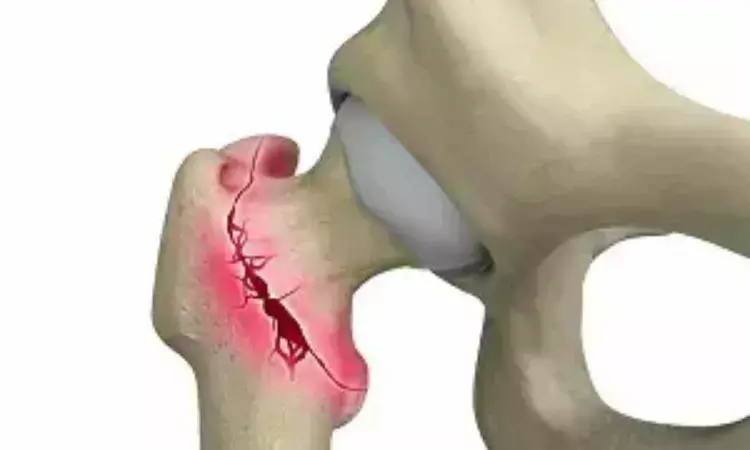- Home
- Medical news & Guidelines
- Anesthesiology
- Cardiology and CTVS
- Critical Care
- Dentistry
- Dermatology
- Diabetes and Endocrinology
- ENT
- Gastroenterology
- Medicine
- Nephrology
- Neurology
- Obstretics-Gynaecology
- Oncology
- Ophthalmology
- Orthopaedics
- Pediatrics-Neonatology
- Psychiatry
- Pulmonology
- Radiology
- Surgery
- Urology
- Laboratory Medicine
- Diet
- Nursing
- Paramedical
- Physiotherapy
- Health news
- Fact Check
- Bone Health Fact Check
- Brain Health Fact Check
- Cancer Related Fact Check
- Child Care Fact Check
- Dental and oral health fact check
- Diabetes and metabolic health fact check
- Diet and Nutrition Fact Check
- Eye and ENT Care Fact Check
- Fitness fact check
- Gut health fact check
- Heart health fact check
- Kidney health fact check
- Medical education fact check
- Men's health fact check
- Respiratory fact check
- Skin and hair care fact check
- Vaccine and Immunization fact check
- Women's health fact check
- AYUSH
- State News
- Andaman and Nicobar Islands
- Andhra Pradesh
- Arunachal Pradesh
- Assam
- Bihar
- Chandigarh
- Chattisgarh
- Dadra and Nagar Haveli
- Daman and Diu
- Delhi
- Goa
- Gujarat
- Haryana
- Himachal Pradesh
- Jammu & Kashmir
- Jharkhand
- Karnataka
- Kerala
- Ladakh
- Lakshadweep
- Madhya Pradesh
- Maharashtra
- Manipur
- Meghalaya
- Mizoram
- Nagaland
- Odisha
- Puducherry
- Punjab
- Rajasthan
- Sikkim
- Tamil Nadu
- Telangana
- Tripura
- Uttar Pradesh
- Uttrakhand
- West Bengal
- Medical Education
- Industry
Integrated Dual Lag Screws have Higher Reoperation Rates for fixation failure for intertrochanteric femoral fractures: Study

Most studies comparing reoperation risk between integrated dual lag screw (IDL) and single lag component (SL) cephalomedullary nails (CMNs) in the treatment of intertrochanteric femoral fractures have demonstrated mixed results.
Gonzalez et al conducted a study to assess the rates of reoperation for fixation failure and all-cause reoperation in a large, multi-institutional cohort of patients with an intertrochanteric fracture treated with an IDL or SL CMN. The authors hypothesized that there would be no difference between the groups with respect to either of the reoperation rates.
Adults (≥18 years old) who sustained an intertrochanteric fracture (AO/OTA 31A1 to 31A3) treated with an IDL or SL CMN at Level-I trauma centers were included. Patients with <3 months of follow-up or pathologic fractures were excluded. Rates of reoperation were compared with use of the chi-square test and multivariable regression, controlling for age, gender, injury mechanism, fracture pattern, and postoperative neck-shaft angle.
Key findings of the study were:
• A total of 2,130 patients met the inclusion criteria.
• The median age was 78 years, and 62.5% of patients were female.
• The cohort consisted of 287 patients (13.5%) with an IDL CMN and 1,843 patients (86.5%) with an SL CMN.
• A total of 99 patients (4.6%) had a reoperation of any type, of whom 29 (1.4% of all patients) had a reoperation for fixation failure.
• Compared with patients with an SL CMN, those with an IDL CMN had higher rates (4.2% versus 0.9%; p < 0.001) and odds (odds ratio [OR], 4.95 [95% confidence interval (CI), 2.29 to 10.69]; p < 0.001) of reoperation for fixation failure as well as higher rates (7.3% versus 4.2%; p = 0.021) and odds (OR, 1.83 [95% CI, 1.10 to 3.06]; p = 0.021) of all-cause reoperation.
The authors concluded that – “Intertrochanteric femoral fractures treated with an IDL CMN were associated with low but significantly higher rates and significantly higher odds of reoperation for fixation failure and all-cause reoperation compared with those treated with an SL CMN. We suggest caution to surgeons in the use of IDL CMNs for high-risk patients and recommend using SL CMNs for most patients with intertrochanteric femoral fractures.”
Level of Evidence: Therapeutic Level III.
Further reading:
Integrated Dual Lag Screws Have Higher Reoperation Rates for Fixation Failure Than Single Lag Component Cephalomedullary Nails A Retrospective Study of 2,130 Patients with Intertrochanteric Femoral Fractures Gonzalez et al The Journal of Bone and Joint Surgery DOI - 10.2106/JBJS.23.01152
MBBS, Dip. Ortho, DNB ortho, MNAMS
Dr Supreeth D R (MBBS, Dip. Ortho, DNB ortho, MNAMS) is a practicing orthopedician with interest in medical research and publishing articles. He completed MBBS from mysore medical college, dip ortho from Trivandrum medical college and sec. DNB from Manipal Hospital, Bengaluru. He has expirence of 7years in the field of orthopedics. He has presented scientific papers & posters in various state, national and international conferences. His interest in writing articles lead the way to join medical dialogues. He can be contacted at editorial@medicaldialogues.in.


